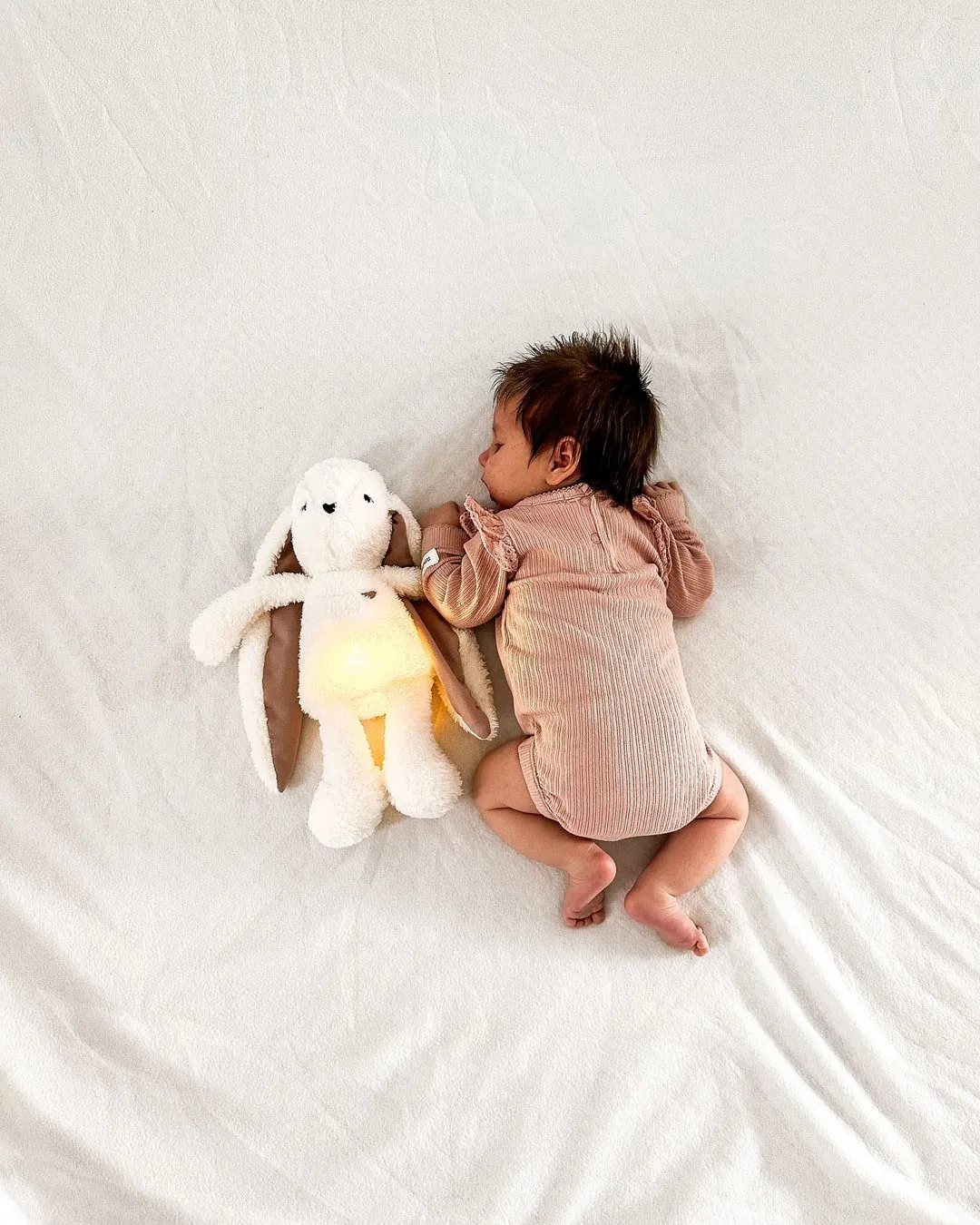Baby Sleep Problems – How to Handle Sleep Issues in Infants?
Blog
8
Baby sleep problems are a common challenge for parents. In this blog, you’ll learn how to identify sleep patterns, create a calm sleep environment, and use practical tips and soothing sleep toys to help your baby fall asleep more easily. The goal is to ensure better sleep for both you and your little one.
Understanding Baby Sleep Problems
Many parents experience infant sleep difficulties, ranging from trouble falling asleep to frequent night-time awakenings. Identifying the exact cause can be challenging. A helpful approach is to keep a sleep diary, tracking when your baby sleeps, eats, and wakes. This can reveal hidden sleep patterns that might not be immediately obvious.
Recognising signs of overtiredness is also crucial. Yawning, rubbing eyes, and restlessness can indicate it’s time to put your baby down for sleep. Acting on these signals early can help your baby fall asleep more smoothly, preventing overtiredness, which often makes sleeping more difficult.
Using Sleep Aids to Soothe Your Baby
A good night’s sleep starts with a consistent bedtime routine. Effective methods to help babies sleep include:
- Establishing a routine – A warm bath, followed by a quiet storytime, can signal to your baby that it’s time for sleep.
- Consistency – Putting your baby to bed at the same time each night and following the same rituals creates a predictable sleep pattern.
- Soothing sounds – Gentle lullabies or white noise can create a calming sleep environment. White noise machines or soft toys with built-in sound features can help block household noises and make falling asleep easier.
Ensuring a High-Quality Sleep Environment
A peaceful sleep environment plays a key role in your baby’s sleep quality. To create an optimal sleep setting, consider:
- Darkness – Use blackout curtains to keep the room dim.
- Temperature control – A cool and comfortable room helps prevent night-time discomfort.
- Safe bedding – A well-fitted baby sleeping bag maintains an appropriate temperature and increases safety by reducing the risk of suffocation.
Keeping a consistent sleep space is important. Avoid letting your baby nap in noisy or overly bright environments, as this can make it harder for them to sleep under different conditions later.
Soothing Sleep Toys to Support Baby Sleep
Using sleep toys that help soothe your baby can be an effective way to improve sleep. Many sleep aid toys simulate gentle rocking motions or vibrations, mimicking the comforting sensations babies experienced in the womb. This can have a deeply relaxing effect.
When choosing a baby sleep toy, ensure that:
- It is safe for cots and cribs.
- It has no small parts that could pose a choking hazard.
- It is made from non-toxic, baby-safe materials.
Teddy Bears for Baby Sleep
A soothing teddy bear that produces gentle sounds or vibrations can be an excellent sleep aid. These plush companions offer both comfort and relaxation, helping babies settle down more easily. Many white noise teddies feature built-in lullabies and heartbeat sounds, imitating the reassuring rhythm of a mother’s heartbeat.
These cuddly sleep aids provide a familiar bedtime presence, making the baby feel secure and comforted. If your baby wakes up during the night, having a familiar, soothing companion nearby can help them fall back asleep more easily.
Lullaby Sleep Toys for Babies
Lullaby toys can play a crucial role in helping babies drift off to sleep. Many of these musical sleep aids offer a selection of calming melodies designed for infant relaxation. Some models include a timer function, ensuring that the music does not play all night but lasts just long enough to help the baby fall asleep.
Playing the same soothing melody each night can reinforce a sleep routine, creating a comforting association with bedtime.
Practical Tips for Restful Nights
To successfully tackle baby sleep challenges, it’s essential to:
- Recognise your baby’s sleep cues to avoid overtiredness.
- Maintain a predictable bedtime routine.
- Experiment with different sleep aids, including white noise machines, musical toys, and plush comforters.
